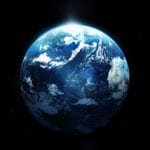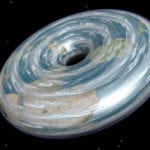 Miscellaneous
Miscellaneous  Miscellaneous
Miscellaneous  Our World
Our World 10 Green Practices That Actually Make a Difference
 Humans
Humans Ten Historic Men Who Deserve Way More Credit Than They Got
 Movies and TV
Movies and TV The 10 Most Heartwarming Moments in Pixar Films
 Travel
Travel Top 10 Religious Architectural Marvels
 Creepy
Creepy 10 Haunted Places in Alabama
 History
History Top 10 Tragic Facts about England’s 9 Days Queen
 Food
Food 10 Weird Foods Inspired by Your Favorite Movies
 Religion
Religion 10 Mind-Blowing Claims and Messages Hidden in the Bible Code
 Facts
Facts 10 Things You Never Knew about the History of Gambling
 Miscellaneous
Miscellaneous Ten Groundbreaking Tattoos with Fascinating Backstories
 Our World
Our World 10 Green Practices That Actually Make a Difference
 Humans
Humans Ten Historic Men Who Deserve Way More Credit Than They Got
Who's Behind Listverse?

Jamie Frater
Head Editor
Jamie founded Listverse due to an insatiable desire to share fascinating, obscure, and bizarre facts. He has been a guest speaker on numerous national radio and television stations and is a five time published author.
More About Us Movies and TV
Movies and TV The 10 Most Heartwarming Moments in Pixar Films
 Travel
Travel Top 10 Religious Architectural Marvels
 Creepy
Creepy 10 Haunted Places in Alabama
 History
History Top 10 Tragic Facts about England’s 9 Days Queen
 Food
Food 10 Weird Foods Inspired by Your Favorite Movies
 Religion
Religion 10 Mind-Blowing Claims and Messages Hidden in the Bible Code
 Facts
Facts 10 Things You Never Knew about the History of Gambling
Top 10 Changes Coming To Space
Many of us grew up learning “My Very Excellent Mother Just Served Us Nachos” in our elementary science classes. The acronym helps children memorize the order of the planets: “My” for Mercury, “very” for Venus, etc. Other astronomical lessons include learning that the Earth orbits around the Sun, the Sun is a big ball of hot gas, and that we live in the Milky Way Galaxy. Some of us may have learned some constellations or the phases of the moon.
However, one of these days, many of these facts, and space as we know it, will change. Some of these changes will have a much bigger impact than when we lost Pluto as a planet. Whether it’s total destruction or just something lighting up our sky, these changes are coming and will affect us on Earth, so get ready.
10 Death of the Sun

Stars are like living things: they are born, they live, and then they die. Our Sun is no exception to that rule. That means that one day, at least 5 billion years from now, our precious Sun will die, so make your plans now.
A star dies when it has run out of fuel. During their lifetimes, stars are performing nuclear fusion.[10] This is when a star takes the hydrogen inside its core, heats it up to extreme temperatures, and converts it into helium. Then, when a star uses up all of its hydrogen, it becomes a red giant. This means the outer layers cool down and expand, while the core, now made of helium, heats up and burns the helium into carbon. From this point, the process can go a couple of different ways. If it is a very massive star, the nuclear fusion process will continue, fusing heavier elements until it reaches iron and explodes into a supernova. The supernova will then leave behind a neutron star or black hole.
Lower mass stars, like our Sun, take a less dramatic route. They expand into red giants, but instead of exploding, they expel their outer layers and leave behind their cores. These “leftovers” are called white dwarfs.
The effects of the Sun’s demise will simply incinerate the Earth. Even though the Sun won’t violently explode, the expansion it will undergo will basically “eat” Mercury, Venus, and Earth. When Earth gets in the Sun’s hot, expanding layers, a couple of things will happen. One, all bodies of water will evaporate and break apart into water’s core elements, hydrogen and oxygen. The hydrogen will be lost to the atmosphere, and the oxygen will be lost to the ground. Two, our atmosphere will change dramatically; it will be composed of mostly nitrogen and carbon dioxide. These two effects, as well as the blistering heart, will make the planet unlivable. Long story short, when the Sun dies, we die.
9 Galaxies Collide
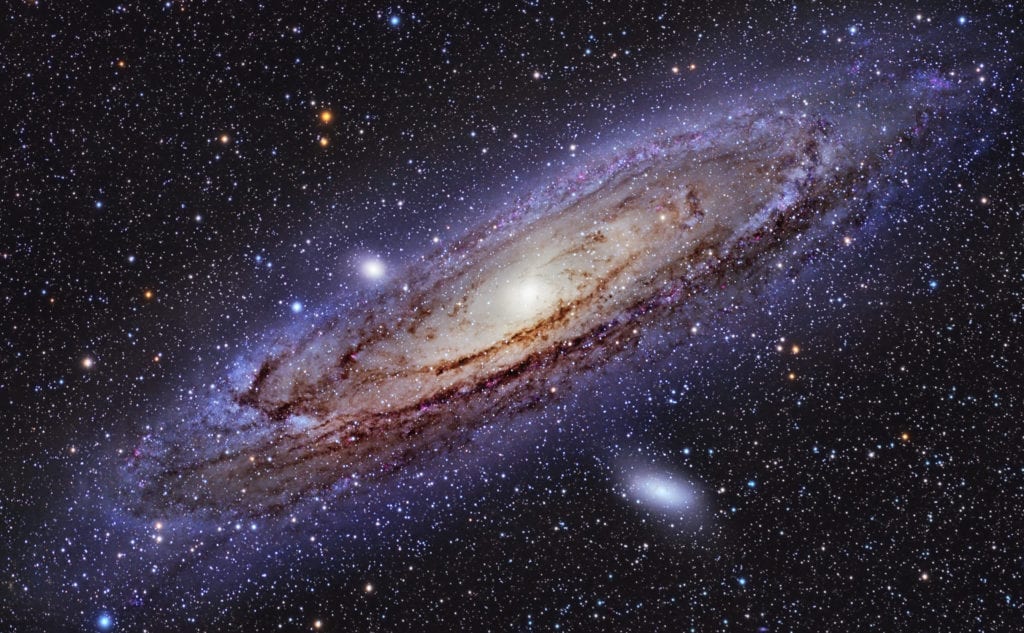
Before we even worry about the Sun’s death, we have another life-changing phenomenon to deal with. Our home, the Milky Way, will not always be our home. In 4 billion years, before the Sun’s death, it will collide with our closest neighbor, spiral galaxy Andromeda.
This was discovered when scientists were measuring the speed of Andromeda and realized that instead of red-shifting, or moving away from us, as predicted, it was blue-shifting. These colors are referring to the wavelengths of the light being emitted from the object. If an object is moving away from us, its light’s wavelengths will get longer, making the light redder. Blue-shifting is where the opposite happens; as the object gets closer, its wavelengths are compressed. Further measurements and calculations allowed scientists to determine the size, motion, and speed of Andromeda. Turns out, the Milky Way and Andromeda are coming together at a whopping 402,000 kilometers per hour or about 250,000 miles per hour.[9]
When it comes to our solar system, we need not worry. Chances of our solar system and sun being ejected or destroyed are very slim, due to the nature of the collision and the galaxies themselves. The collision itself will not be like two cars slamming into each other on the highway. Instead, like anything colliding in space, the two will spiral together, like animals circling each other in a fight and getting closer and closer together. This spiraling, as you can imagine, will cause the sides of the galaxies to hit first. These swipes will cause some disruption, but the changes of the solar system or sun being lost are very slim at less than 15%. These swipes will continue to happen until all the stars get hooked on one center of gravity during the last stages of merging. Finally, the two supermassive blackholes at the center of each galaxy will merge, causing a huge warp in space-time, eating surrounding matter in the process. This super-supermassive black hole will cause the surrounding stars, including the Sun, to be pushed out and around, forming an elliptical galaxy.
Since Earth will survive, and the Sun hasn’t died on us yet, future Earthlings will actually be able to witness the event, so stargazers, mark your calendars!
8 Betelgeuse Will Explode
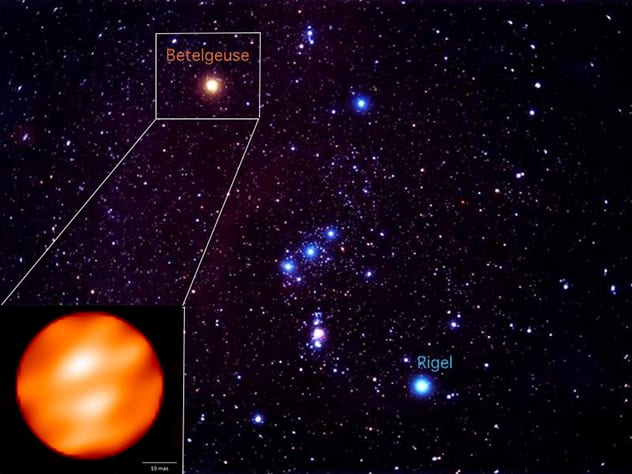
This item on the list is not catastrophic, nor does it have a huge effect on the universe at large. It will, however, totally change our night sky and has scientists and stargazers alike dying with anticipation.
Betelgeuse (not Beetlejuice) is a red giant whose reddish glow is visible in the Northern Hemisphere. It lies in the constellation Orion and makes up Orion’s “right shoulder,” so for spectators, it’s on the left side of the massive constellation, right above the belt.[8]
Unlike our sun, Betelgeuse is a massive star, and it is now at the end of its life. As a red giant, it is burning helium in its shell and is burning carbon and other heavier elements at its core. Eventually, this star will explode into a supernova. This could happen literally any minute, and we won’t be able to miss it.
Betelgeuse, a member of the Milky Way, is already the ninth brightest star in our sky, so when it does explode, it will be nearly as bright as the moon. Not only will it turn the night into day, but it will actually be visible during daylight hours because of how bright it will be. The supernova will be visible for a few weeks as the object expands, reaches maximum brightness, and then dims back down.
There has not been a supernova in the Milky Way since 1604 when scientist Johannes Kepler spotted the supernova that would bear his name. The last time a supernova of significant brightness was visible to us on Earth was in 1987 when supernova 1987a went off in the Large Magellanic Cloud, one of the Milky Way’s galactic neighbors. There have been many supernovae since then, but this one was the first time a supernova had been spotted since the 1600s. This one was visible only in the southern hemisphere, however, and was not as bright as Betelgeuse will be.
7 Expanded Solar System
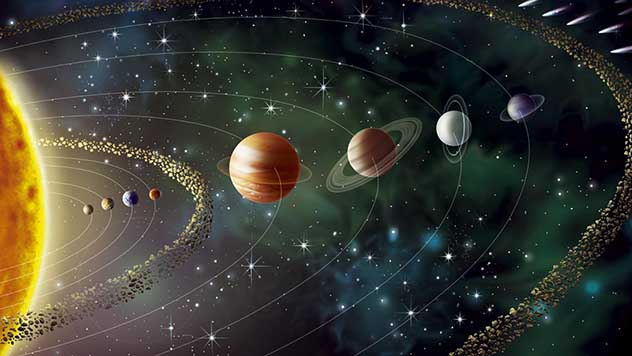
If you thought memorizing the order of 8 (or 9) planets as a child was tricky, try adding another 100.
Yes, a solar system of about 110 could be in order. This doesn’t mean over 100 planets were discovered, but rather, the definition of what a planet is could be changed to include over 100 bodies, including the Moon and Pluto. Earlier this year, scientists started the debate over what defines a planet, and, like always, it was heated.
Today’s definition of a planet is a body that has a strong gravity and its own domain. For example, Earth is a planet because it is big and has its own gravitational territory. The Moon, which was once considered to be a planet hundreds of years ago, is not a planet today because it is in orbit around the Earth, and therefore not dominant. This definition was established in 2006, and is ultimately what ousted Pluto. The “new” definition that was proposed this year was less about gravity and more about the composition of the planet. The new definition says that a planet is any body that is massive enough to have its own gravity, of whatever scale, but not be so massive that it starts to undergo nuclear fusion and burn itself up, like a star. That would make objects like the Moon, Pluto, Pluto’s “moons,” and many other objects lying in the Kuiper Belt planets in our Solar System.
While the impact of this definition has no physical effect on Earth, it is important to be aware of it. Just imagine how much more homework kids will have to go through in order to learn over 100 planetary names!
6 Ninth Planet—Again
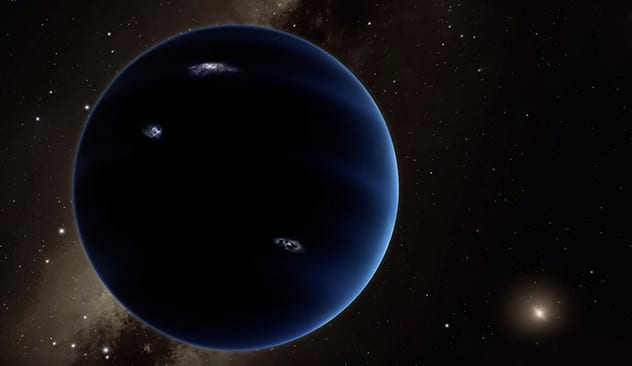
Contrary to adding 100 planets, scientists in California announced last year the possible discovery of just one “planet” lying beyond Neptune. This giant icy body is ten times bigger than Earth and has a strong gravitational field. This would mean it fits the bill for today’s definition of gravitational dominance, as well as the “new” definition about composition.
The only catch is that scientists haven’t actually seen this planet. They don’t even know for sure if it is a planet, but the evidence is promising. They detected it by observing the behaviors of surrounding bodies. They noticed that the orbits of some of these outer objects were being affected by an unseen force. That unseen force could very well be a planet. Right now, there are two telescopes in search of it. As far away as the object is, though, the Sun’s light might not be able to reach it, so no light would therefore be reflected off of the planet.
If this planet is discovered- if it even is a planet- it would completely change what we know about the Solar System, and maybe bring some consolation to those who still mourn Pluto.
5 Departing Moon
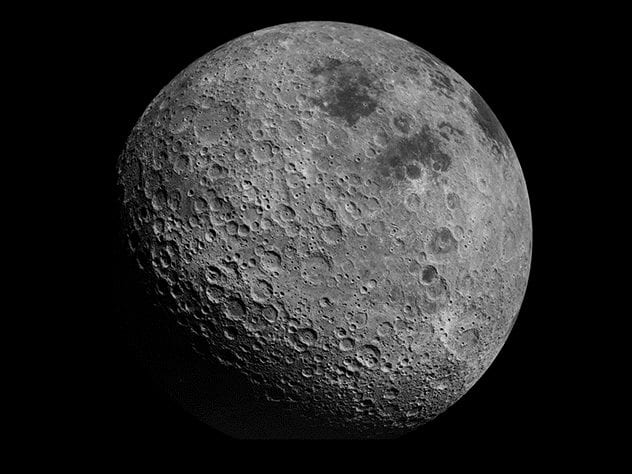
The Moon, Earth’s constant companion for billions of years, is gradually moving away from Earth at 1.48 inches a year. This is caused by tidal forces. The gravitational and tidal forces that the Moon and Earth exert on one another cause friction. This friction pushed Earth’s tidal bulge ahead of the moon. This acceleration tries to sling the Moon around faster, but it is instead counteracted. Instead of giving in and speeding up with the Earth’s tides, the Moon loses energy and slows itself down in orbit, which causes it to drift away.[7]
This subtle change could actually have huge implications on Earth, including our lives as we know them. The biggest effect is the change in the length of our day. When the Moon and Earth were first formed 4.5 billion years ago, days were only about 5 hours long. That’s the equivalent to a gain of .0000152 seconds per year, which doesn’t sound like much, but adds up over time. In nearly 250,000,000 years, our days will have 25 hours! That’s great news for those of us who could use some extra time in our days, but not so good for the environment.
Slowing down the rotation speed of the Earth will cause it to wobble, like when a spinning top slows down. This wobble will greatly impact the seasons, causing extreme temperature swings that many animals and plants would not be able to adapt to quickly enough and survive. Humans probably would be able to handle it because of such advanced technology.
4 Martian Rings

Once again, this is not catastrophic or has any drastic impacts on Earth or our elementary school educational system, but, like Betelgeuse’s inevitable supernova, this will change what we see in our sky.
We probably won’t see them with the naked eye, but in about 70 million years, Mars might have rings.[6] One of Mars’s moons, Phobos, is moving towards the Red Planet. Once it reaches a certain point, the gravity of Mars will take over and shred the moon apart. These shreds will get caught in orbit, accreting around the planet, forming rings.
Even though this doesn’t affect us on Earth much, it will be a good reason to bust out the telescope!
3 Solar System Destruction

There is a small, but still notable, chance that the orbits of the four inner planets could become completely erratic and cause destructive collisions. It all starts with Mercury’s funky orbit. Firstly, it orbits around the Sun with a much more eccentric ellipse. This just means that its orbit is more stretched out and oval-like. Secondly, the orbit precesses more extremely than the other planetary orbits. Precession is when a planet’s given position, like perihelion (the point at which it is closest to the Sun) changes. One year its perihelion is at location A, then it moves to location B, and so on.[5]
The part of its orbit that matters most here is its eccentricity. Scientists have found that Jupiter’s gravity could catch Mercury and use its elongated orbit to pull it outward even more, potentially intercepting Venus. Another possible scenario is that Mercury could go beyond Venus’s orbit and collide with Earth. If the former of these two happens, it might not affect Earth, so it would really be something to see! If the latter happens, we die.
No need to panic, though. While these scenarios aren’t impossible, the chances of any of this happening are very slim. Regardless, you have at least 3 billion years to prepare.
2 Earth’s Core Cooling
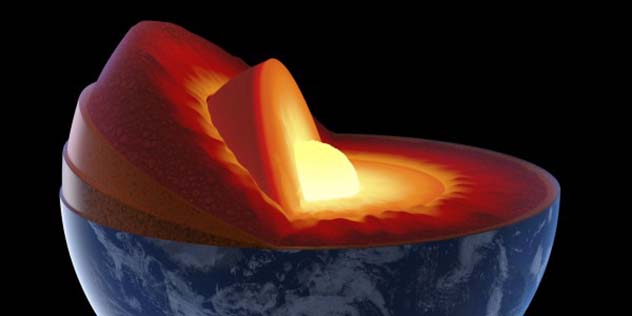
Earth’s extremely hot, molten core is cooling down, and if it reaches a certain temperature, it could ultimately lead to Earth’s destruction.
Currently, the core is both freezing and melting.[4] As the core begins to cool and freeze, it releases heat energy into the metal-rich area between the core and the crust called the mantle. This creates convection in the mantle, where heat rises and cool air sinks. These currents move magnetic iron around, and that generates Earth’s magnetic field. While this is the “normal” process, there are some places along the core-mantle line where the energy from the mantle goes back into the core, melting those spots.
We see that the core is both losing and gaining heat at the same time, but if the core just cooled down completely, the effects could be devastating. The greatest effect would be on our protective magnetic field. If the core freezes, convection would no longer occur, and the magnetic field would no longer be generated. The magnetic field protects the Earth from the dangers of space. Without it, the planet could be exposed to radioactive waves and scorching solar winds.
While it isn’t likely to happen, such an event has not been completely ruled out. We are probably better off just not knowing what happens.
1 The Big Rip
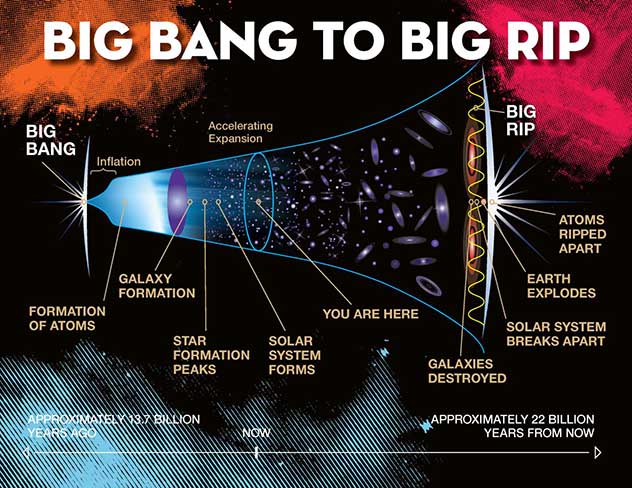
This scenario is also hypothetical, like Earth’s cooling core, but it comes from a phenomenon that is conclusively occurring. Scientists have proved that the universe is expanding and accelerating.[3] What happens as a result of this accelerated expansion is completely based on mathematical predictions, and one of those predictions sheds light on a not-so-pleasant fate.
The “Big Rip,” as it’s called, is like the opposite of the Big Bang. In the Big Bang, the universe was formed and everything in it was formed in later stages. The Big Rip is the destruction of all of that creation. The theory is that as the expansion gets faster, the mysterious fuel behind it, dark energy, gets stronger. If that’s the case, then the strength of that dark energy will eventually reach a point that other objects and forces cannot resist it and will be torn apart.
Including us.
